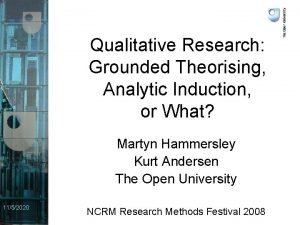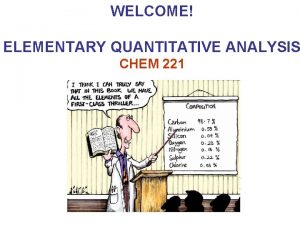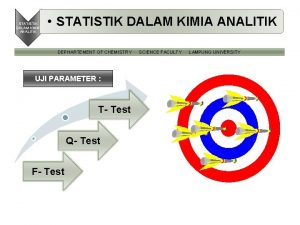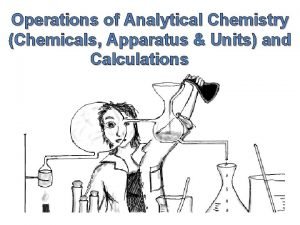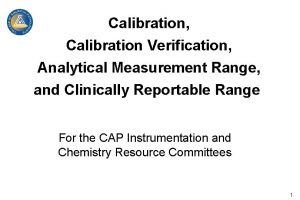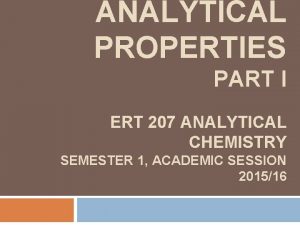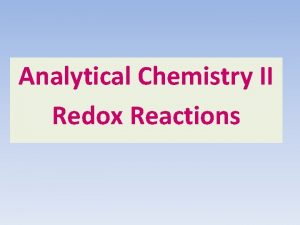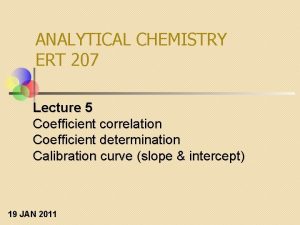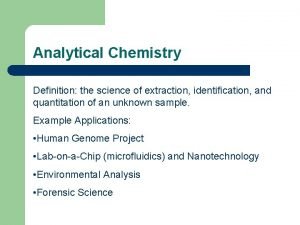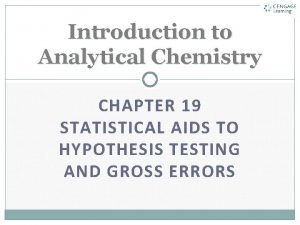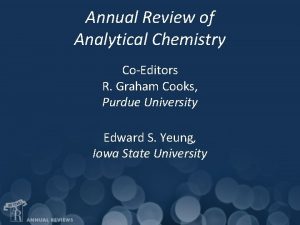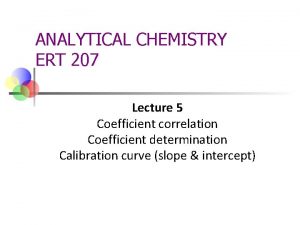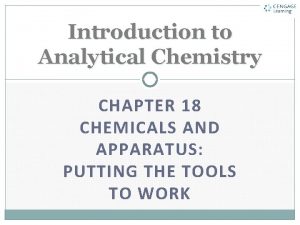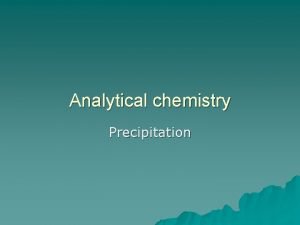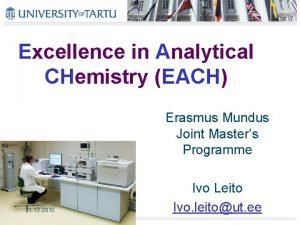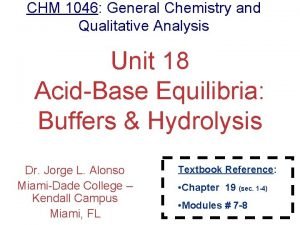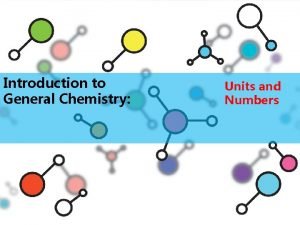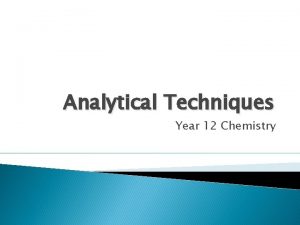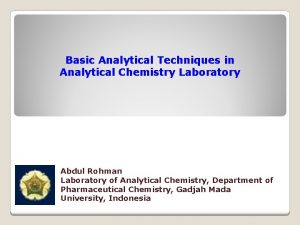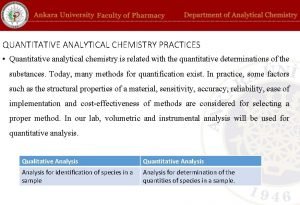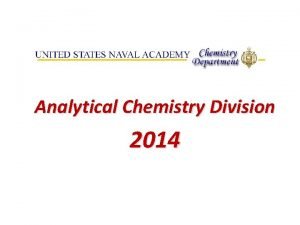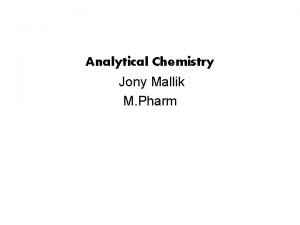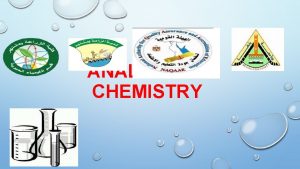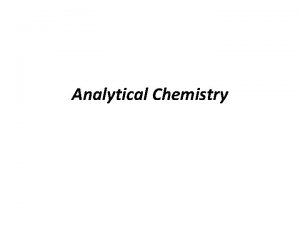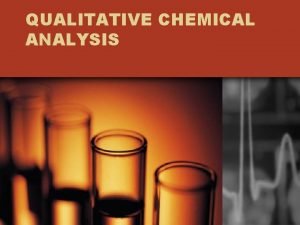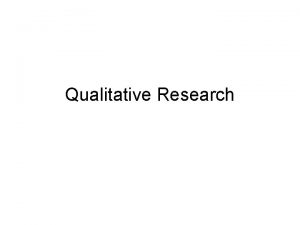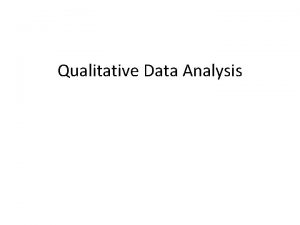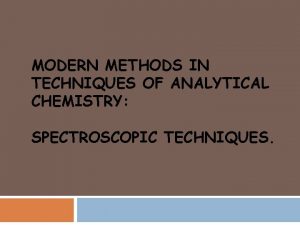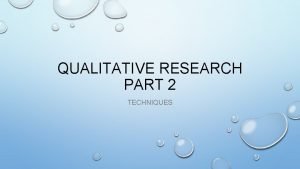Part 1 Modern analytical chemistry Analytical techniques Qualitative





















- Slides: 21

Part 1 : Modern analytical chemistry

Analytical techniques Qualitative analysis: the detection of the presence but not the quantity of a substance in a mixture, for example, forbidden substances in an athlete’s blood. Quantitative analysis: the measurement of the quantity of a particular substance in a mixture, for example, the alcohol levels in a driver’s breath, or the toxic metal levels in a sample of river water. Structural analysis: a description of how atoms are arranged in molecular structures, for example, the determination of the structure of a naturally occurring or artificial product.

Methods studied this year Infrared spectroscopy which is used to identify the bonds in a molecule. Nuclear magnetic resonance spectroscopy which is used to show the chemical environment of certain atoms (hydrogen, carbon, phosphorus and fluorine) in a molecule and so gives vital structural information.

Example 1

Example 2

Example 3

The electromagnetic spectrum

Wavelength (λ) : the distance between two successive crests or troughs (in m) Frenquency (ν): the number of waves which pass a point every second (in Hz)

Absorption and emission spectra

Nomenclature of organic compounds Number of carbon atoms in the longest chain stem 1 Meth- 2 Eth- 3 Prop- 4 But- 5 Pent- 6 Hex- 7 Hept- 8 Oct- 9 Non- 10 Dec-

Functional groups

Substituent group

Ester functional group

Infrared (IR) spectroscopy • Whatever the state of a molecule, the atoms are not fixed (or motionless), their bonds vibrate or bend. • Therefore, a chemical bond can be thought as a spring.

IR spectroscopy • IR spectroscopy is the study of absorption of organic species for radiations between 800 and 1000 nm. • The infrared spectrum of a species is shown in a graph of the transmittance T (in %) against the wavenumber σ (in cm-1). In IR spectroscopy, the frequency of radiation is often measured as number of waves per centimetre (cm-1), also called the wavenumber. • The spectrum shows bands of absorption : as the vibration of a bond is excited, the molecule absorbs the radiation and therefore the transmittance falls, producing a peak or a band of absorption.

Matching wavenumbers with bonds


Different parts of an IR spectrum • From 4000 to 1400 cm-1 the spectrum shows the characteristic bands or peaks of the bonds. • From 1400 to 500 cm-1, this part, more complex, is typical of the compound and is often named as the « fingerprint » of the molecule.

Structure of propanone

Identification of an organic compound • The formula of an organic molecule M is C 4 H 8 O. We know that the molecule is not a cyclic one. • Which are the possible functional groups corresponding to the presence of one oxygen atom in the M molecule? • Prove the presence of a double bond in the molecule, either between two carbon atoms or between one carbon atom and one oxygen atom. Justify using the octet rule.

The IR spectrum of the molecule is shown below: • Which extra information does this spectrum give us? • Write down the structural formulae of the three possible molecules. • The molecule comes from the oxidation of a second class alcohol. Conclude.
 Analytic induction qualitative research
Analytic induction qualitative research Analysis
Analysis Kesalahan dalam analisis data
Kesalahan dalam analisis data Analytical chemistry statistics
Analytical chemistry statistics Macrobalance analytical balance
Macrobalance analytical balance Analytical measurement range
Analytical measurement range Gaussian curve
Gaussian curve Analytical chemistry definition
Analytical chemistry definition Correlation coefficient in analytical chemistry
Correlation coefficient in analytical chemistry Extraction science definition
Extraction science definition Q test in analytical chemistry
Q test in analytical chemistry Annual review of analytical chemistry
Annual review of analytical chemistry Correlation coefficient in analytical chemistry
Correlation coefficient in analytical chemistry Analytical chemistry chapters
Analytical chemistry chapters Special purpose reagent chemicals
Special purpose reagent chemicals Analytical chemistry
Analytical chemistry Excellence in analytical chemistry
Excellence in analytical chemistry Cengage
Cengage General chemistry with qualitative analysis
General chemistry with qualitative analysis Qualitative analysis chemistry
Qualitative analysis chemistry Quantitative and qualitative in chemistry
Quantitative and qualitative in chemistry Qualitative analysis chemistry igcse
Qualitative analysis chemistry igcse
